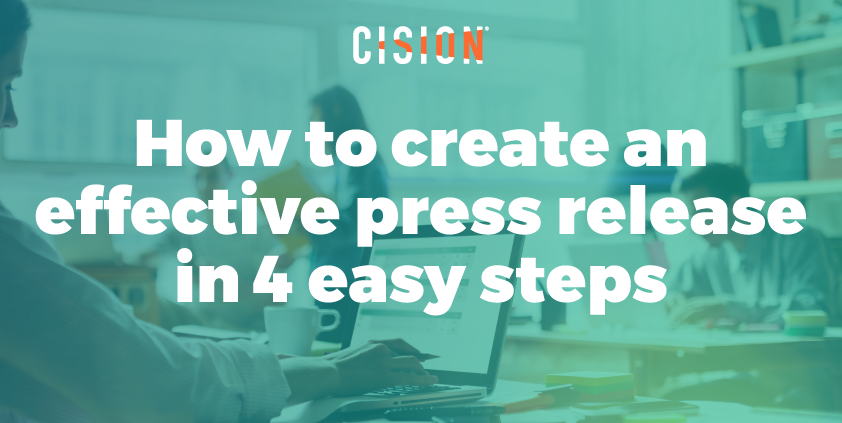How to create a highly effective press release in 4 easy steps
The press release remains an essential tool of the trade for PRs and communicators alike.
The media landscape may have changed dramatically in recent years. But the fundamentals of media relations remain the same, whether you’re launching a product, handling a crisis or contributing to a topical public debate. And, while it may be evolving, the press release remains a staple of media relations and PR.
So, whether you’re writing your first ever press release, or simply looking to refresh your memory on the basics – take a look at this essential guide to creating great press releases in four easy steps.
1. Identify the “news hook”
If you want to get the attention of the press, you’ve got to think like a journalist. So, the first job when writing a press release is to identify the “news hook”.
This will be the most newsworthy element of the story, and will form the headline and lead of the piece. (As a general rule of thumb, you should be able to sum it up in 27 words or less.)
Remember, different titles cater for different audiences. So the best hook may differ depending on who you are pitching to. For example, titles with differing political slants will routinely put contrasting spins on the same piece of political news.
In many ways, this is the hardest part of the process. It requires familiarity with your target audience and a strong grasp of what makes a story newsworthy. Try looking for stories with a human angle, that can be linked to a prominent public figure or which provide insights through new research.
Once you’ve identified the hook, you’re ready to put together the rest of your press release.
2. Decide which information to include
The aim of newswriting is to inform your reader as efficiently as possible. Try to lay down just the facts, without adding your own commentary to the mix.
When thinking about what information to include in your press release, remember these six questions. They will help you deliver the key information to a reader or journalist:
- Who are the important people in your story?
- What are the key facts the reader should know?
- Why is this something the reader should care about?
- Where did this news happen, or will it take place?
- When did this news happen, or will it take place?
- How did this story come about?
Strong opinions make for great quotes – and if there’s public interest in the person speaking, a great, justifiable, quote can form the basis for a story all by itself.
Journalists like having a selection of sources, especially for longer pieces. So if you think you have an interesting story to tell, try to include two or three different quotes for them to choose from.
3. Put the most newsworthy facts first
When writing your press release, start with the headline. From there, list the information in order of newsworthiness, with the most important facts first. Be sure to weave your brand’s messaging in with the story – ideally in such a way that it’s not easily deleted.
It’s generally best to put all your quotes at the end of the release, as different titles will have different conventions about how they use quotes in their pieces.
Finally, make it as easy as possible for the journalist to answer any questions they might have about your story. Include a “boilerplate” at the end, providing background information about your brand, along with your contact details so the journalist can get in touch directly.
To achieve maximum coverage, you should also have a picture ready to go with your story. This can be attached to your press release when you send it, hosted online or simply kept on hand until someone requests it.
4. Send your release using industry-leading PR software
Once your press release is complete, it’s time to distribute it to relevant journalists using the Cision Communications Cloud.
With more than 1.6 million contacts and 300,000 digital influencers, it’s more than the industry’s largest media database. It also uses smart insights to highlight trending influencers and recommend the best contacts for every press release you send.
Each media list you create is automatically updated behind the scenes, so you can be confident you always have the best details to reach your contacts on.
What’s more, the Cision Communications Cloud’s intuitive email distribution system makes it quick and easy to design, setup and send powerful press releases. You’ll even get clear data on email open rates, clickthrough rates and more – so you can see exactly who is engaging with your content.
This information is essential for maximising the impact of your press releases. If you have a great story to share, you shouldn’t settle for anything less.
So click the link below now to discover more about what the Cision Communications Cloud can do for your business, or email our friendly team at [email protected].








